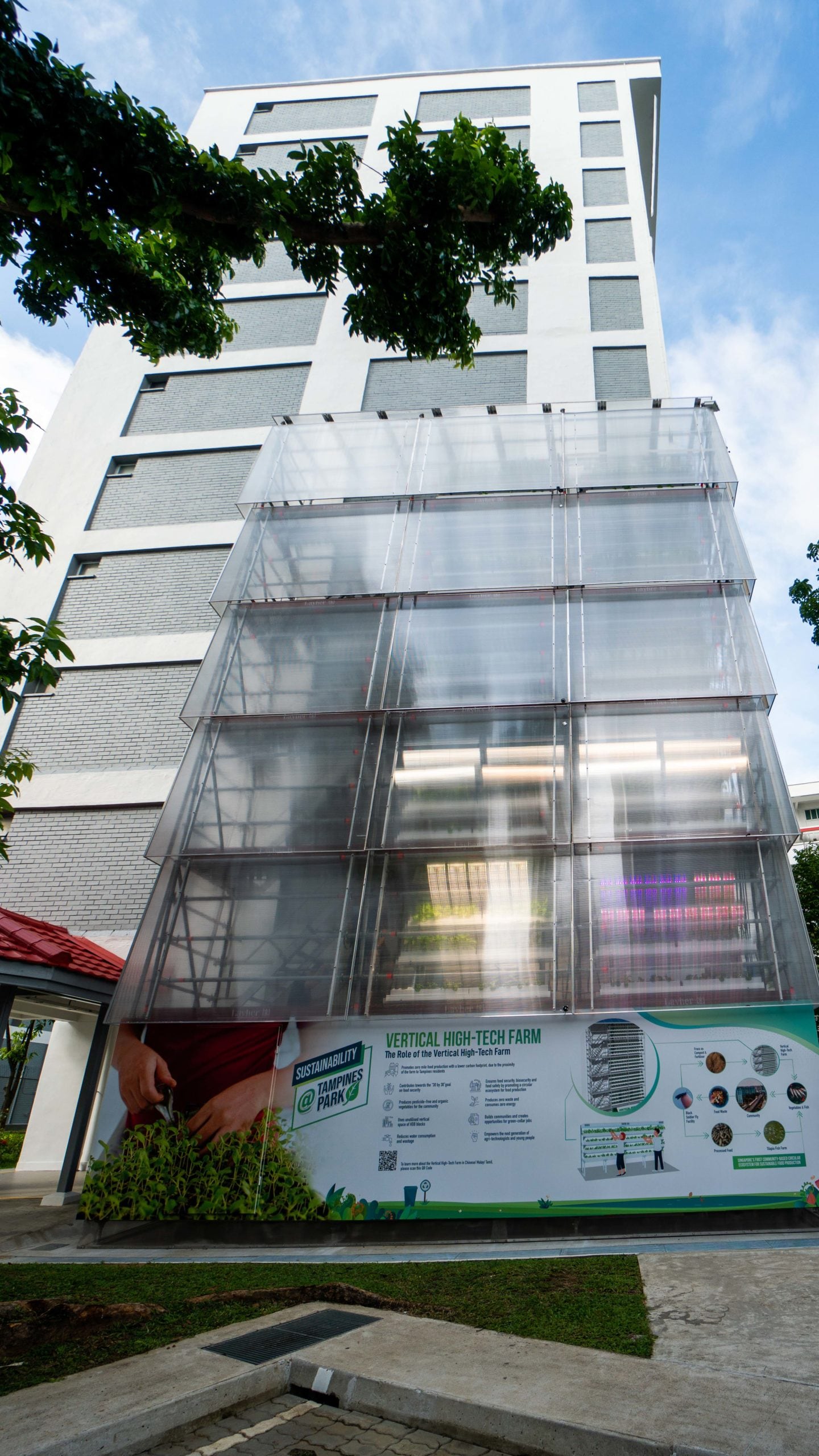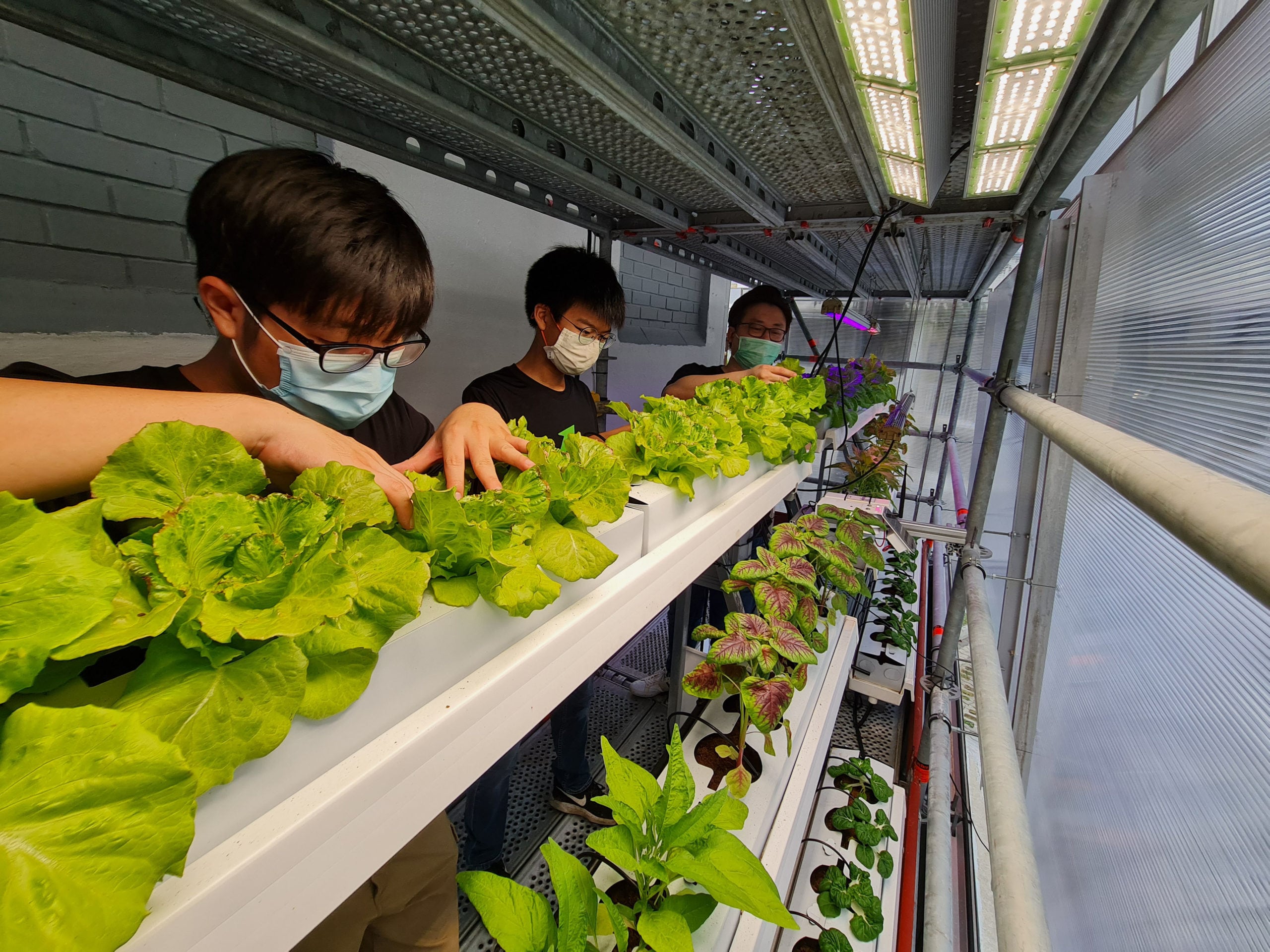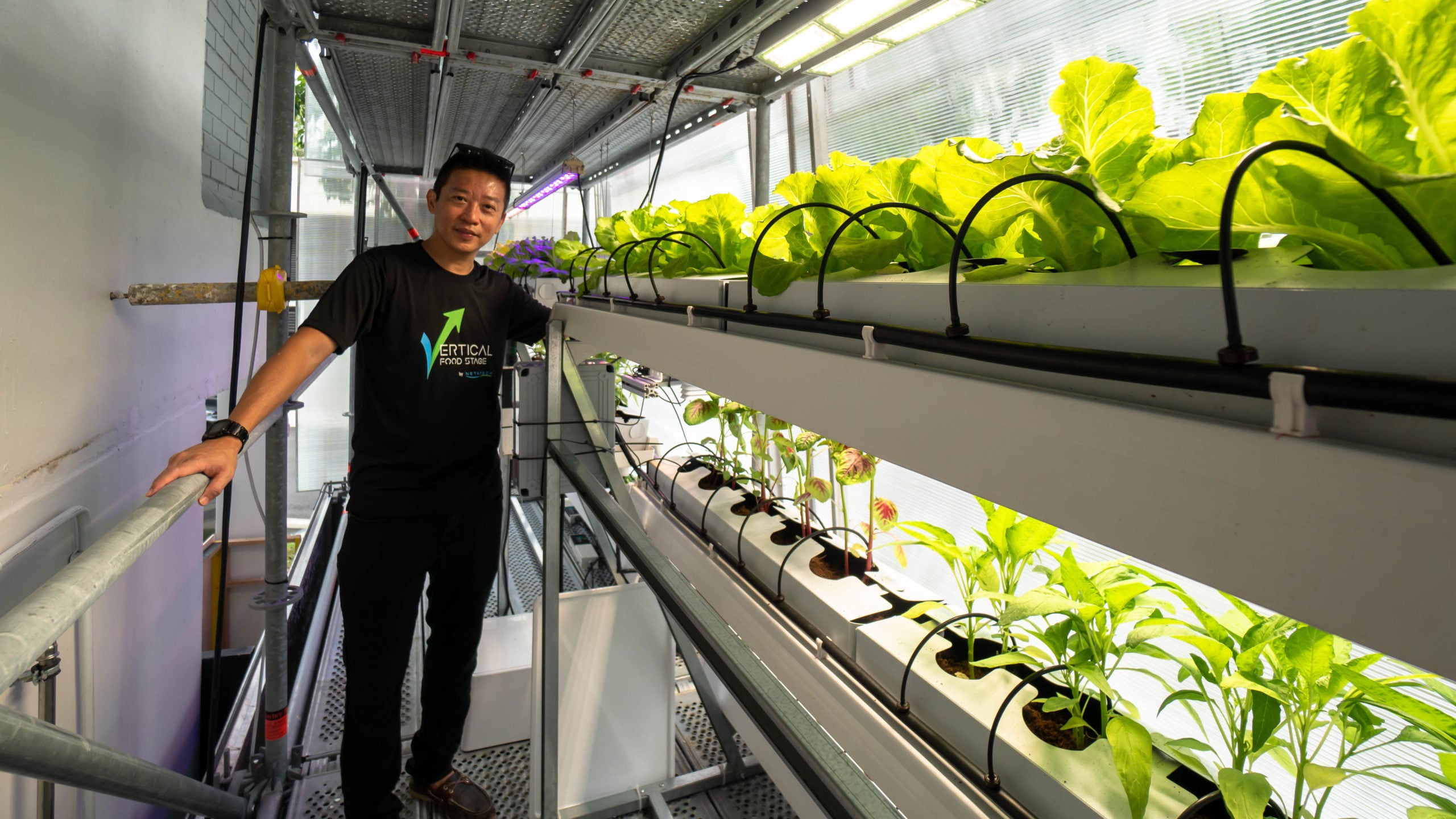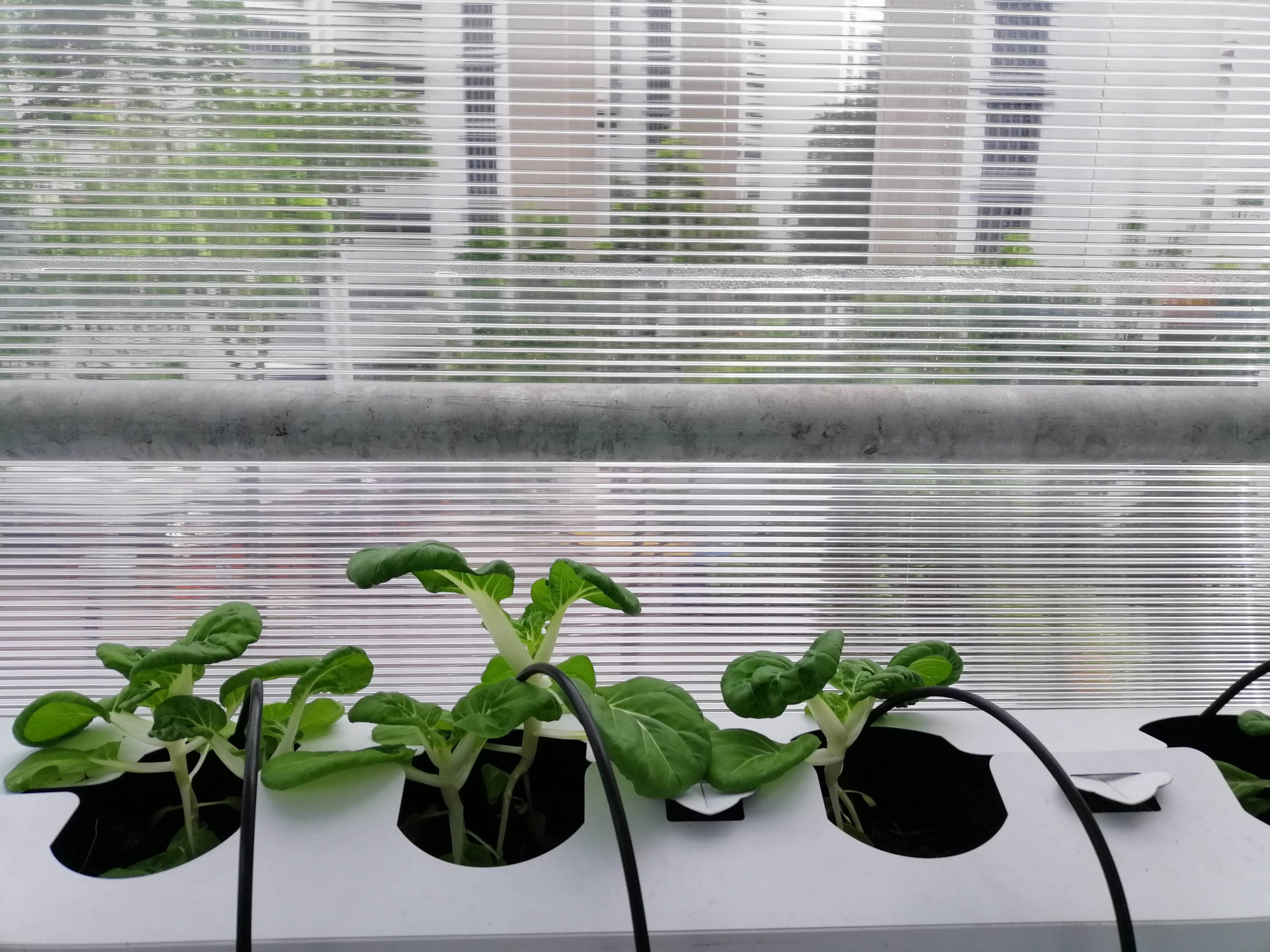Vertical Greens: The Future of Farming May Just Be a HDB Block Away
22 Jan 2021In 2020, many witnessed empty supermarket shelves for the first time — a result of abrupt border closures in the early months of the pandemic. While the shortage was temporary, it remains a stark reminder of Singapore’s heavy reliance on foreign food imports.
Just 1 percent of Singapore’s land is earmarked for agricultural use. With homes, businesses and industries competing for space, expanding farmlands significantly isn’t an option. As a result, urban farmers have gotten creative. Recent years have seen an increase in farms in spaces closer to communities and the city centre, ranging from school and community gardens, to rooftops as well as top floors of multi-storey car parks.
Despite efforts to increase local food production, it continues to account for less than 10 percent of the country’s nutritional needs. What more can be done to enhance food resilience for Singapore? How can urban farmers scale to achieve the country’s goal of ‘30 by 30’ which requires a near tripling of local food production by 2030?
The urban farmers at Netatech have the answer: the underutilised facades of residential public housing blocks.
Growing Up
Standing on the third storey of the Vertical FoodStage, the test-bed for his vertical farm, Netatech’s CEO David Tan takes in the rows of planters that stretch out before him. The five-storey farm, which has been built along the facade of Block 146 in Tampines, will yield its third harvest soon.

Local food production gets a boost with urban farming company Netatech’s new vertical farm.
A dull whirring comes on and David watches the pipes that run along each planter dispense rainwater drawn from a tank on the ground floor, sprinkling each crop with the same amount of water. The use of technology, like this drip irrigation system, pioneered by Netatech in Singapore, is at the heart of the Vertical FoodStage. Its closed circular system is powered by solar energy and uses cloud technology to create optimal environments for crops to thrive without pesticides.
Supported by Temasek Foundation, the project aims to test-bed the high-tech commercial production of vegetables and other crops using unutilised vertical spaces in HDB estates.
How then would the harvest make it to the ground floor? David has two solutions that they plan to adapt, depending on the demographics of the residents surrounding the farm, and their interest in urban agriculture.
The first: to engage and train members of the community, from youths to retirees, to transplant the seeds and harvest the crops. Many seek to live more sustainably, to be more conscious of what they eat, and are keen to be more involved in how their food is being produced. Motivation however may not be enough. Most Singaporeans continue to value convenience. The increase in home gardeners during the pandemic and community gardens is a clear indication that proximity is key. Through the Vertical FoodStage, Netatech brings the farm to them.

Young urban farmers harvest local vegetables including lettuce from a modern, vertical farm.
In the event proximity isn’t enough of a draw, Netatech’s alternative is to tap on a Transformer-like robotic arm, or cobot. While the cobot was designed to sort produce and allow consumers to collect their purchases at any time of the day, it can easily be programmed to harvest and transplant if need be.
From HDB Farm to Fork
To get the vegetables to consumers, David draws from his background in supply chain management. Instead of transporting the harvest for redistribution to supermarkets, the Vertical FoodStage’s marketplace allows for residents to make an online purchase directly with them. They can then collect the vegetables they need for a quick dinner, from POPStation-like lockers connected to the FoodStage, right at their doorstep. This fuss-free collection allows consumers to enjoy fresh vegetables while also lowering their carbon footprint significantly.

Test-bedding a new platform for vertical farming with Netatech’s CEO, David Tan.
Eating Local
Typical indoor farms have high energy costs and need to produce high value crops like kale to make business sense. The Vertical FoodStage cuts this key expense by simply harnessing solar energy to power the ecosystem. With lower operational costs, it is able to also produce local, staple vegetables such as red spinach, nai bai (milk cabbage) and kai lan (Chinese broccoli) and sell them at prices comparable to traditional local farm produce at the supermarket.

Milk cabbage (nai bai) overlooks neighbouring HDB blocks as grows in the new vertical farm.
Rachel Wong, a retiree who makes a conscious effort to learn where her produce comes from, likes that “their vegetables don’t wither as quickly.” She stir-fries them in garlic or sambal, enjoying the added sweetness and crunchiness from fresher produce that has travelled fewer miles.
Despite having 20 varieties ready for harvest, David knows consumers will get bored and is constantly working to add variety. For instance, to maximise real estate, full-fledged models of the Vertical FoodStage will also grow mushrooms and fungi on the inner wall, away from sunlight.
Netatech is also in the midst of an experiment involving another daily staple: rice. Growing rice may conjure images of flooded rice terraces, but residents don’t have to worry about watery HDB corridors. Rice fields are traditionally flooded to prevent or kill weeds, which is not an issue in this project, as they won’t get a chance to grow in the Vertical Foodstage’s closed ecosystem. For now, it’s promising that their drip irrigation technology would yield their first rice harvest soon, making a baby step towards the diversification of Singapore’s food sources.
“The long-term health of a country is dependent on not just how we bring food to our table, but also the nutritional value of what we eat.”
– Lim Hock Chuan, Chief Executive, Temasek Foundation Ecosperity & Temasek Foundation Innovates
To achieve this, “Temasek Foundation is committed to uncovering and supporting creative and innovative solutions that can substantially improve the resilience of our food systems and supply chains.”
With the test-bed, “Netatech is given an opportunity to demonstrate the feasibility and relevance of its technology for sustainable urban farming,” says Mr Lim, “and we look forward to more residents benefitting from its products.”
The immediate next steps for the Netatech team is to set up 10 to 20 vertical farms that stand as tall as HDB blocks in the eco-town of Tampines. They would also officially launch their marketplace for residents to enjoy the spoils of their harvest.
The vision? To supply 75% of HDB blocks, or approximately 7,500 blocks, with produce from these vertical urban farms. Just as Singapore has been lauded for self-reliance and self-sufficiency with our Water Story, David believes that “our farms should be another miracle story that others can follow.”